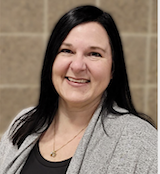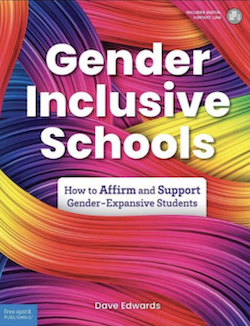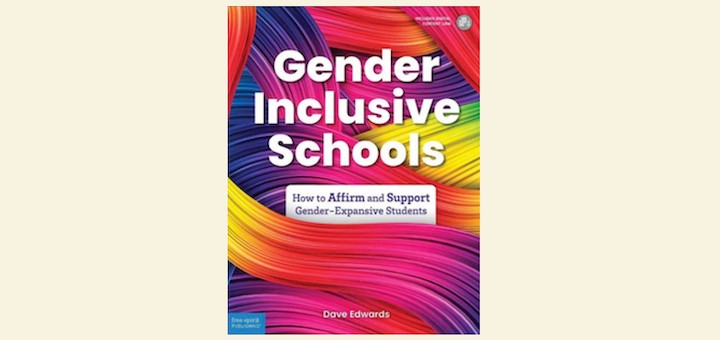Gender-Inclusive Schools: How to Affirm and Support Gender-Expansive Students
By Dave Edwards
(TCM/Free Spirit Publishing, 2025 – Learn more)
Reviewed by Melinda Stewart

 In Gender-Inclusive Schools: How to Affirm and Support Gender-Expansive Students, Dave Edwards provides a timely and thoughtful resource for educators, administrators, and caregivers seeking to create more inclusive and supportive environments for students who identify as gender-expansive.
In Gender-Inclusive Schools: How to Affirm and Support Gender-Expansive Students, Dave Edwards provides a timely and thoughtful resource for educators, administrators, and caregivers seeking to create more inclusive and supportive environments for students who identify as gender-expansive.
With an increasing awareness of the diverse ways in which students experience and express gender, this book stands as an invaluable guide to navigating the complexities of gender identity in educational settings.

 Gender-expansive identity is one aspect of identity that I personally have the least experience with, so I know I need to actively seek learning opportunities to help me minimize any harm that I might be causing. I am so glad I picked up Edwards’ book.
Gender-expansive identity is one aspect of identity that I personally have the least experience with, so I know I need to actively seek learning opportunities to help me minimize any harm that I might be causing. I am so glad I picked up Edwards’ book.
Gender-Inclusive Schools: How to Affirm and Support Gender-Expansive Students is divided into practical sections that explore key issues affecting gender-expansive students and offers concrete strategies for creating inclusive policies and practices. Edwards draws on his years of experience as an educator and advocate for gender inclusion to provide a combination of theoretical background and (more importantly) real-world advice.
Edwards offers a wealth of case studies, real-life examples, and practical tips. The language is clear and straightforward, making it accessible even to those who may be unfamiliar with gender theory or the specific challenges faced by gender-expansive students (and their families). The balance of the book ensures that educators understand the why behind inclusion and are also given some actionable steps for putting the knowledge into practice.
Gender-Inclusive Schools stands out for its commitment to offering solutions within a variety of environments. Edwards doesn’t assume that all schools will be able to implement large-scale changes immediately. Instead, he provides ideas that can be integrated gradually. I greatly appreciated the focus on intersectionality and the case study scenarios that address a wide range of situations, from parent communication to school board meetings.
Exploring the possible responses to resistant comments and Edwards’ activity suggestions was very helpful to me. As I reflected and practiced, I felt my confidence grow. The words began coming more naturally, thus building my confidence that they would come out in a supportive manner if I were confronted with a situation.
Gender-Inclusive Schools: How to Affirm and Support Gender-Expansive Students is not an all-inclusive handbook that discusses curriculum and lesson planning, support group organizations or outside of school settings. Edwards provides resource suggestions for further study but uses the platform of this book to provide practical advice for educators to help them create climates that are predictably safe and affirming for their students. I have a feeling this book will prove to be an invaluable resource and one I turn to time and time again.
Melinda Stewart has been an educator for 30 years. She has an MA in Teaching, Education and Learning and has done graduate work in the areas of English as a Second Language, Reading, Spanish, and most recently English Language Arts. She is currently working as a Spanish teacher and ELM coach at Fairmont Junior Senior High School. Melinda is an MEA and AFT professional development facilitator and trainer who has a deep passion for learning and equity.









